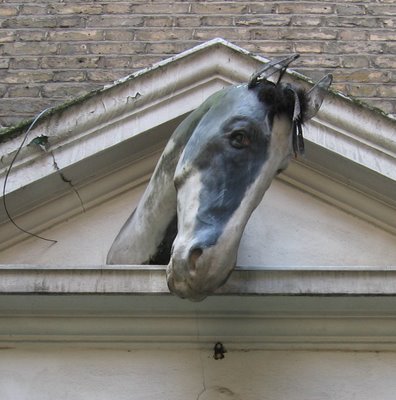The internet shop from which I connected to the web in the last three months has large signs saying "No porn sites". Twice I witnessed the staff asking clients to stop looking at naked women or log out and leave. One black Caribbean guy responded by calling the shop-attendant "Taliban". The term came so instantaneously out of his mouth, so easily without a second of reflection, that I was taken aback. "Do you know what the Taliban is?" asked the guy from the shop in a tired tone. But the customer was not interested in his take on the Taliban. He knew what the term meant, and said it again. "Taliban".
The staff are all Muslim, bearded men in galabiyas. Most are African, from Sudan and East Africa is my guess. The only thing they play on the stereo is Qur'an Suras. I can't say they're particularly nice, unless you say Salam Alaykum, and then you get a smile and 'Alaykum al-Salam'. In other circumstances I would have used the greeting - it does not come unnatural to me - but here it felt like a code to a fraternity to which, in truth, I do not belong; I did not want to feel like a phony. My Hello was always greeted with a suspicious head nod. Perhaps you develop this attitude when you're running an internet shop on a main road in Hackney. Perhaps they're just not friendly. My views on life and the universe are probably very different from theirs, but on the porn issue I'll take their side; I'd rather not have the guy sitting next to me drooling over these pictures.
It's a strange place, Hackney. Like Peckham, or Brixton, everything is in-your-face, including the mix of cultures. On the corner where the internet shop is located there is also a Turkish club for men playing cards all day; a Vietnamese grocery; a small Turkish supermarket; a West-African take-away; a cheap hostel. For a whole month the corner also featured a large billboard advertisement for Marks and Spencer's middle-class-respectable women clothes, showing a model sailing a gondola in Venice. I wondered if M&S had any idea who the people walking past were, and the likelihood of their buying into this Venice fantasy. But I'm straying off my main subject, which is the meeting of cultures, "the clash of civilisations" in the corner of Mare st and Wells st.
Diversity is the most striking feature; diversity of colours, tastes, and sounds. In contemporary writing ethnic difference is often reduced to food, and in such a place it is perhaps inevitable. Get your Chinese lettuce from the Vietnamese, your pomegranates from the Turkish, your Curry-Goat from the Caribbean takeaway. Isn't it wonderful, the collage of cuisines, and aren't we all so lucky, to be living in Bablyondon. On the bus you hear the music of a hundred languages (spoken on mobile phones), mixing together to one symphony, of dense melodic rhythms of little water streams or the cacophony of busy market places, all far far away from this hazy cold city.
From here it is only a small step to the trope of multi-culturalism, which has now the status of an official doctrine. It says, in brochures and posters, more or less in the following lines: respect, live side by side, appreciate difference. We come in all colours and shapes, we each keep our languages, our cultures, our beliefs; we engage in a polite way to make this a free and open and diverse society.
The discourse of multi-culturalism often invokes images of the tapestry or the mosaic, that is, of different elements juxtapositioned within a coherent whole. The problem with such models is that they represent the world as flat, two-dimensional and static. What is missing is the flows which create this tapestry; the forces that shape it, and the frame which sets its borders. The problem with this ideology of pluralism and tolerance is what it makes invisible: the fact that it operates and depends on a society of consumption, on global capitalism, on certain gender-roles and power-relations. You can look at the Hackney street-corner or upper-deck of the bus and marvel: like in Benetton adverts, skins in every colour. Difference is made a commodity in the age of consumer choice. But what is left of difference when you don't want to buy or sell it?
I look at the Hackney street corner and I see invisible forces at work: immigration; exploitation; power; commodification; those are but a few that make this space what it is. If you don't see them, you will see the 'clash of cultures', or, in more optimistic moments, the Mediterranean cucumbers alongside Vietnamese mint; and the smiles of the faces in the colours of the rainbow, but how they (people and vegetables alike) got here, and what they are, will be lost in the two-dimensional multi-cultural snapshot.
This doesn't mean I have a dictionary through which I can translate the world correctly, reduce everything to its real meaning, using theories of capital or gender. No; if anything, my experiences from the internet shop tells me things are never so simple.

Thursday, December 13, 2007
Subscribe to:
Post Comments (Atom)


No comments:
Post a Comment